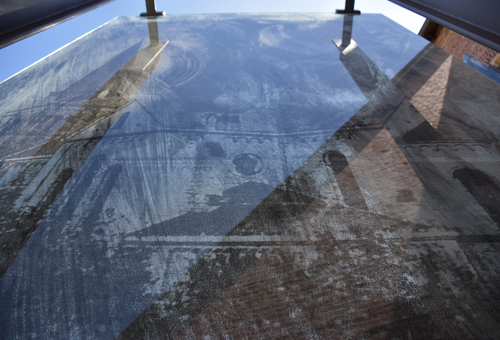
Pastor Franz Boehm (1880–1945)
The Roman Catholic clergyman Franz Boehm was born in Boleszyn, West Prussia, in 1880, and died in Dachau in 1945. Between 1938 and 1944, he worked as priest in the parish of St. Gereon. As soon as he took office, he was observed by the fanatical Nazi mayor Grütering, because Franz Boehm was also active in the pastoral care of Polish forced laborers in Monheim and preached against National Socialism. Due to his open criticism of Nazi ideology and his active resistance, Pastor Boehm was arrested on June 6, 1944 and deported to Dachau concentration camp one month later. He died there as prisoner number 91577 on February 13, 1945.
Work of art and memorial
On the occasion of the 120th birthday of Pastor Franz Boehm, the City of Monheim am Rhein and the Catholic parish had a monument erected in his honor. The design, which emerged from a competition, was created by artist and architect Thomas Kesseler.
Painting, architecture and sculpture combined in one work of art
The ensemble of printed glass panels, a bronze bust and an architectural element is located north of the present choir of the church of St. Gereon, where the apse of the previous building, which was destroyed in the war, once stood.
In the center is a tall column with the life-size bronze bust of Franz Boehm. The pastor is gazing at a low semi-circular wall that hints at the position of the original chancel of the church. This wall, made from reused bricks, doubles as a seating area, inviting visitors to stay a while and reflect.
Destruction made visible
Behind the bronze bust are two 4.2 meter high and 2.25 meter wide glass plates set in metal. With the aid of silkscreen printing, Thomas Kessler has put old photographs of the destroyed church on the imposing and eye-catching panels. The architectural images are superimposed onto abstract motifs – black brushstrokes and scratches – which are intended to illustrate the violence of the destruction and “the erasure that took place here", according to the artist.
The front sides of the glass panels reflect the surroundings and incorporate them into the artwork – to illustrate how Boehm himself affected the city.

.JPG?type=monheim-entdecken-inhaltsbild)
